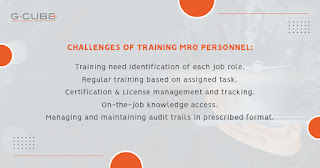Conducting successful and scalable training for all is a fairly large and cost-intensive challenge. Especially if you are Maruti Suzuki India Limited, one of the leading manufacturers of passenger vehicles in India. With 3904 service centers, 3617 sales outlets and 1934 cities covered by service network, MSIL has one of the largest workforces, spread across different regions, with multi-variate skill requirements and levels. To maintain the brand value across this vast network and their ‘unbeatable First Time Right Score’ at the service centers, regular training for the MSIL workforce, including external dealers, was an imperative. Singular events of training the service engineers, sales rep or customer service executives were simply not enough to ensure that the training given to these employees was effective enough to maintain the brand goodwill continuously.
With our 20+ years of experience in the learning industry, GCube was approached to analyze the challenges specific to the automobile industry. One of the key results they were looking for was an increase in knowledge retention based on role, responsibility and KPIs. To counter the major issue of loss of knowledge after a few days of training and lack of engagement with the training content, GCube developed a problem specific learning solution called the Spaced Learning Program.
The Spaced Learning Program was designed to reinforce learning and improve performance through greater training recall. The idea was to define the pre-training and post-training engagements for the batches who are to go through the training programs. The entire program was divided into multiple knowledge bites in various formats and scheduled even before the training has taken place. The training triggers a chain of events which engages the learners at every step, before and after the training while ensuring they remember their training.
What problems did the Spaced Learning Program solve?
Increased engagement
For Maruti, engagement was critical on 3 levels: cognitive, emotional, and behavioral. Poor information retention, passive learning, and a lack of commitment were factors leading to training and development challenges. Once the training program was scheduled for a group, the Spaced Learning Program was designed to identify the training content for defined group based on the pre and post training knowledge. This was then shared with the attendees throughout the course period. These exercises encouraged learners to participate in constructive problem-solving, which improved cognitive engagement.
Multi-media content for different learning habits
Maruti manufactures 1.5 million cars a year with over 150 variants, services almost 46000 cars everyday and has around 15,945 employees. Keeping up with the industry standards and latest technologies, is a must at MSIL. Once the trainer planned and delivered their training strategy successfully, it is implemented through the Spaced Learning Program which included different types of training content like customized e-courses, game-based learning, case studies, surveys, articles, videos, and assessments.
Training schedule, communication, and tracking
The above mentioned numbers are a challenge in itself and to keep a track of the progress made by the employees involved can be simply termed as ‘impossible’. But to ensure training progress MSIL had to plan content around the training program and send it out to attendees at regular intervals along with pre-determined notifications to ensure participation and knowledge retention. To capture the attention of the attendees and ensure better knowledge retention for longer duration, the Spaced Learning Program created an automated learning schedule even before a trainee joined. This gave the trainee view of what they will learn, when they will learn it and what the company expects from them without anyone having to keep a track but progression happening automatically.
Spaced Learning for Maruti in a Nutshell

Let us have a look at some of the benefits of a Spaced Learning Program:
- Administrators and trainers may use the Spaced Learning Software to incorporate refreshers or continuous learning programs to classroom training. This curriculum may include a SCORM course, an assessment, an HTML course, or links to other resources. These learning styles can be time sensitive, and learners are notified via email/SMS when new ones become available.
- The Spaced Learning Program module is configurable and can be switched on/off based on the requirement in an automobile company.
- Stand-alone classroom training or time-bound non-blended programs or courses can be added to the Spaced Learning program.
- Repetition and reinforcement of information is delivered through different formats to improve understanding and increase recall.
- Engagement and application strengthen key learning and improves retention.
The auto industry has people at the core of all business innovation and growth. Upgrading to a learning and information acquisition approach allows the people to remember their training and apply what they’ve learned. This in turn minimizes errors for the organization and helps people see growth in their careers. With GCube’s Spaced Learning Program, Maruti, helped their trainees to better recall a wide range of topics covered during the training session, which in turn played a strategic role in improving organizational performance.
At GCube, we have 20 years of experience and 100+ industry awards in learning technologies; and would love to hear your thoughts, queries, and suggestions. Please do write to us at info@gc-solutions.net.







